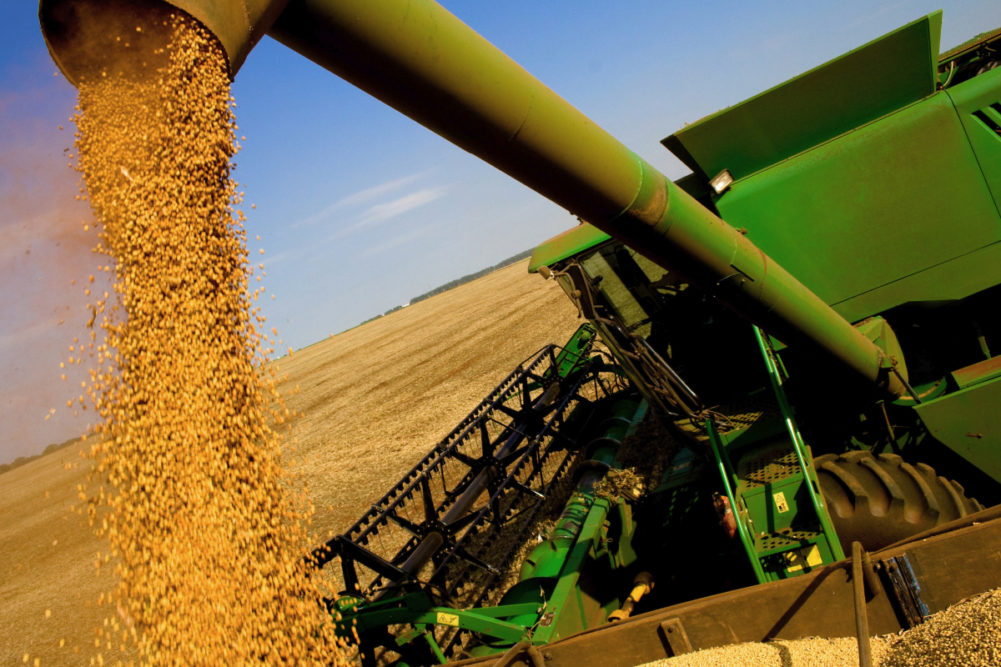KANSAS CITY — After a mid-March bounce from contract lows, soybean futures in April dropped to trade in a relatively narrow range whose midpoint was about 30¢ a bu above the low posted on March 19 (July future) but about $1.30 a bu below recent highs posted on Jan. 2. Ample US and world supplies weighed on soybean futures, and the spread of the coronavirus seemed only to add to the pressure. Soybean futures were expected to remain under pressure in coming weeks as planting of the 2020 crop gets underway, according to analysts interviewed by Milling & Baking News.
While pandemic uncertainties were aplenty, the key to the soy complex remained demand, said Brian Harris, executive director and owner, Global Risk Management Corp.
“China is just now coming back online and has been able to fulfill their soybean needs from Brazil to this point,” Mr. Harris said. “It would still appear as though they will have a tough time meeting the volume commitments outlined in the phase one agreement. It may well be summer before we see them buying significant quantities of US soybeans.”
Paul Meyers, vice president, commodity analysis, Foresight Commodity Services, Inc., said he always thought China’s purchases of soybeans and other US farm products would fall short of what they agreed.
“But I am still surprised at how small their purchases have been,” he said.
While COVID-19 has contributed to the shortfall in exports to China as compared with earlier expectations, Mr. Meyers pointed out Chinese demand for soybeans was curtailed much earlier by disease ravaging the nation’s swine herd.
Both Mr. Harris and Mr. Meyers expected Chinese purchases of US soybeans to increase in the summer, but with Brazil nearly completed harvesting another record crop and the weakness of the Brazilian currency versus the dollar, US soybean exports to China may be limited until closer to the US harvest.
The US Department of Agriculture in its April World Agricultural Supply and Demand Estimates report lowered its forecast for 2019-20 soybean exports by 50 million bus, to 1,775 million bus, mainly because of strong competition from Brazil. Both Mr. Meyers and Mr. Harris said they thought the new export forecast may still be too high.
The USDA in the April WASDE raised its forecast of the 2019-20 soybean crush by 10 million bus, to 2,125 million bus, because of higher projected soybean meal exports and domestic use.
But soybean meal futures have tumbled since late March and set new contract lows last week as the soybean harvest in Argentina, the world’s largest exporter of soybean meal and oil, expanded, positioning that nation to reassert its dominance in the soybean meal export market.
Also concerning were recent closings of certain US slaughter plants because of worker exposure to COVID-19. Short term, this may be positive for soybean meal demand as more animals would have to be fed while awaiting slaughter. But longer term, should producers reduce herds, domestic soybean meal demand may take a hit. This possibility certainly seemed to be on the mind of traders.
Soybean oil futures recently have traded in a fairly narrow range not far above contract lows set March 19.
The USDA in the April WASDE lowered its forecasts for soybean oil use for food and biodiesel manufacture in 2019-20 by 200 million lbs and 300 million lbs, respectively.
“We believe that domestic soybean oil use has dropped between 50% and 60% over the last 30 days,” Mr. Harris said. “Even plugging in a number closer to 25% to 30% over the next few months with a rolling restart of the economy, we would see 2019-20 soybean oil ending stocks closer to 2.5 billion lbs versus the USDA’s April number of 1.830 billion.”
Mr. Meyers agreed that US soybean oil stocks may exceed the USDA’s forecast because of weaker biodiesel demand.
Both Mr. Meyers and Mr. Harris expect producers to plant more acres to soybeans than the 83.5 million acres forecast by the USDA in its Prospective Plantings report issued March 31. The USDA forecast a 10% increase in soybean planted area from 2019, when excessively wet conditions prevented many acres of both corn and soybeans from being planted.
“I think US soybean acreage could be 1 million to 2 million acres above intentions due to strengthening soybean prices relative to corn and a bearish US corn supply-demand outlook,” Mr. Meyers said.
The corn balance sheet may worsen as early as the May WASDE report, when the USDA will revisit its forecast for corn use for ethanol in 2019-20 and provides its initial forecasts for 2020-21 supply and demand, Mr. Meyers added.
“We think that the March plantings number from the USDA was too low and are currently using between 85 million and 86 million for planted acreage in our numbers,” Mr. Harris said.
Mr. Meyers, asked about his expectations for soybean futures direction, said he thought the July soybean future may fall to $8.25@8.35 a bu in the next couple of months (the April 14 close was $8.55½ a bu).
Mr. Harris said, “November soybeans are currently trading around $8.70 a bu. We see them in a range between $8.50 and $9.10 over the next few months unless there is a major weather issue. All eyes remain on China demand and any additional fallout from COVID-19.”






